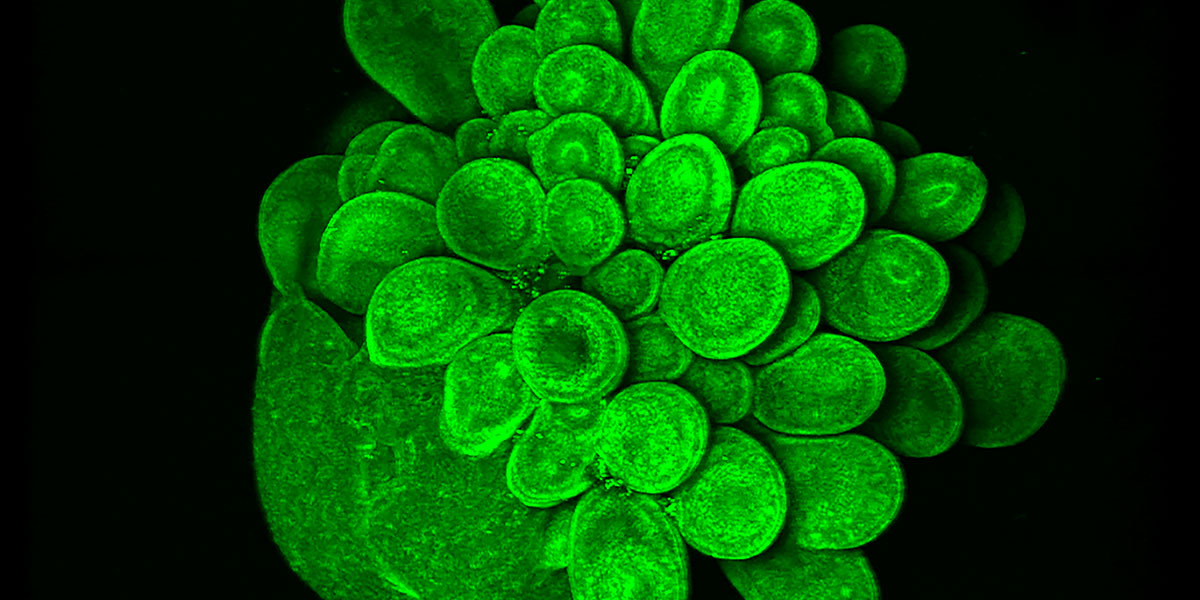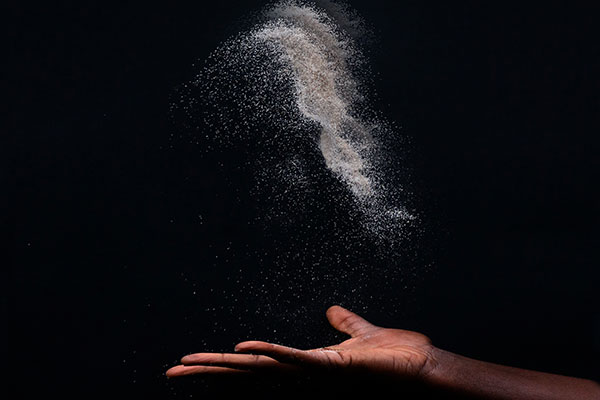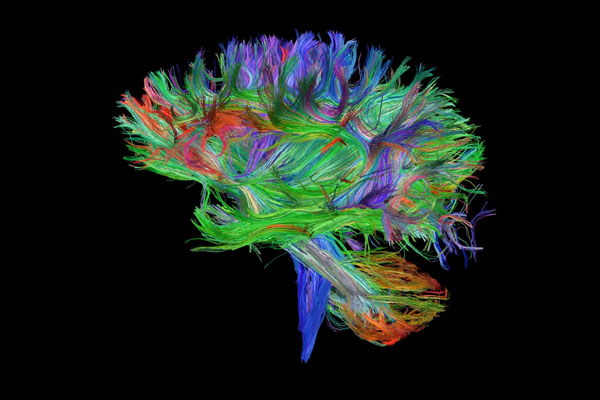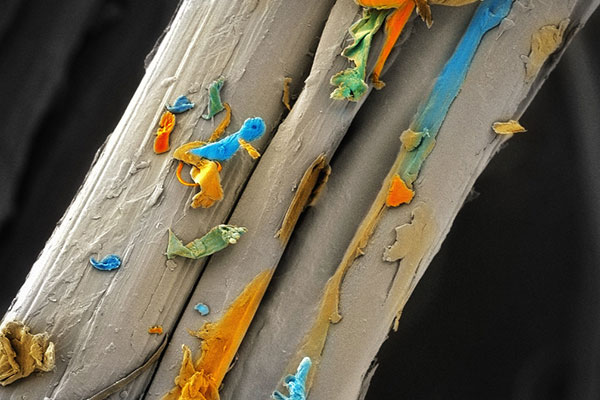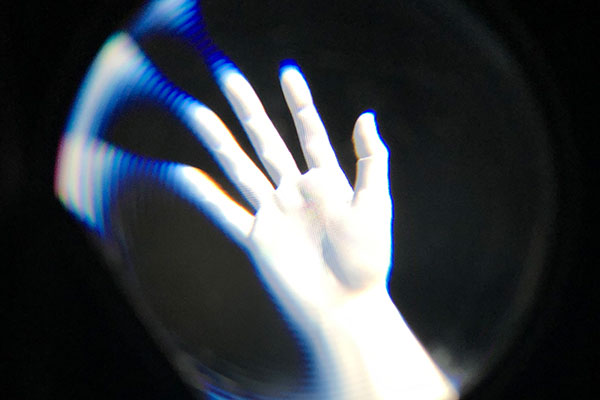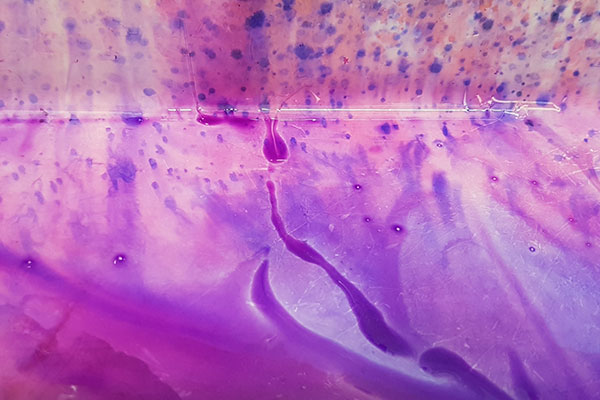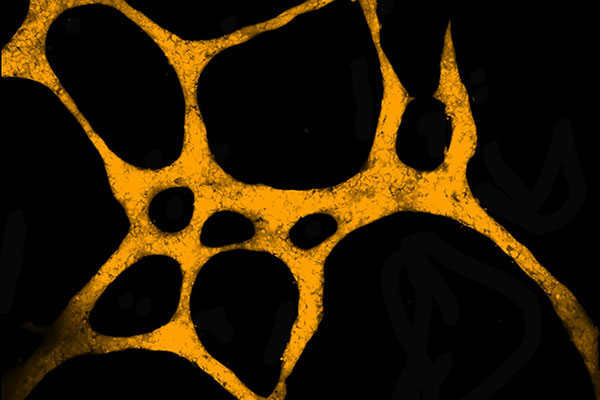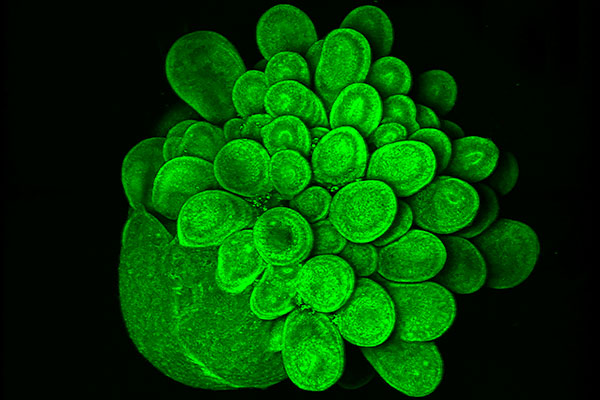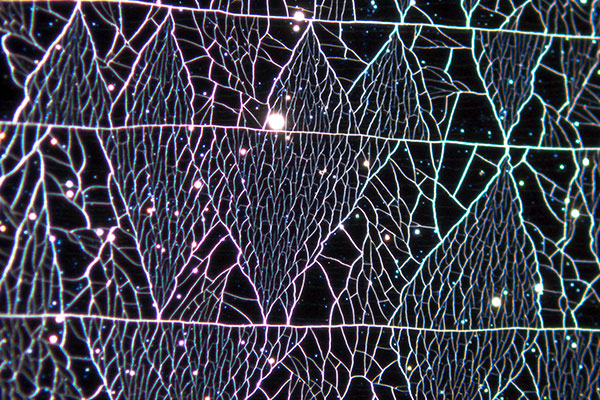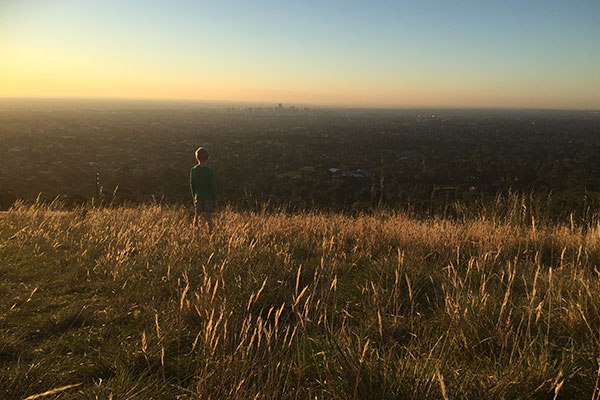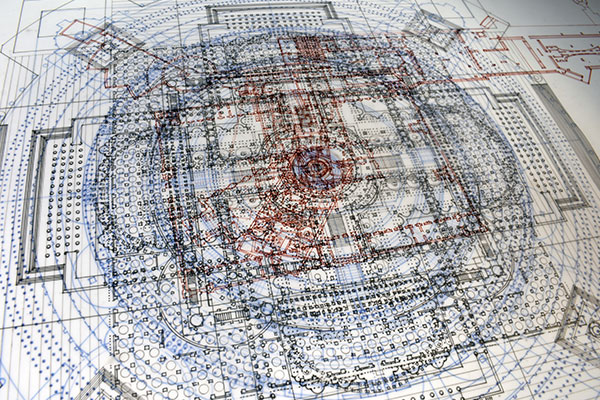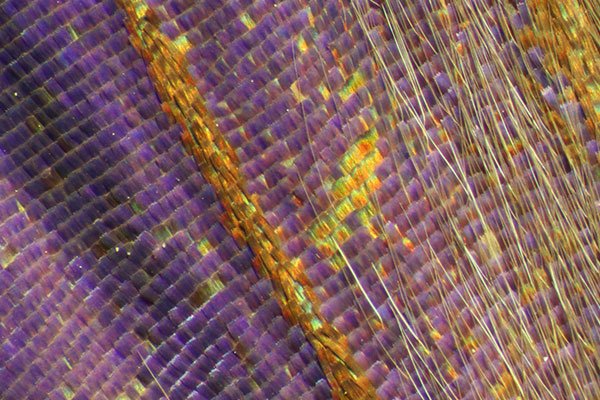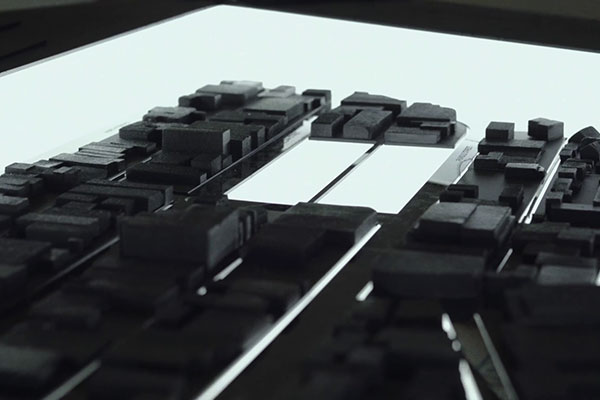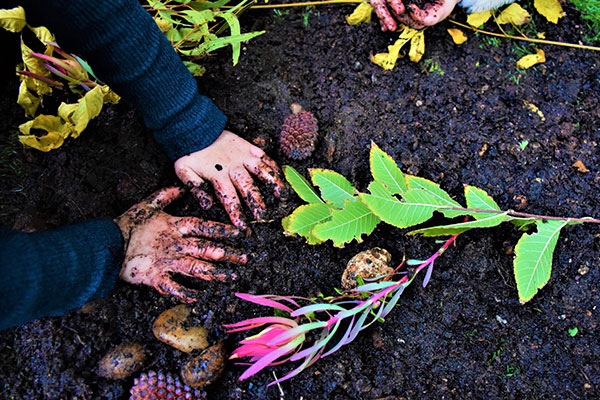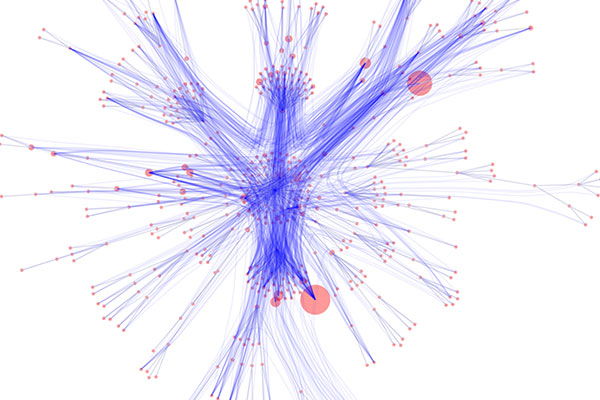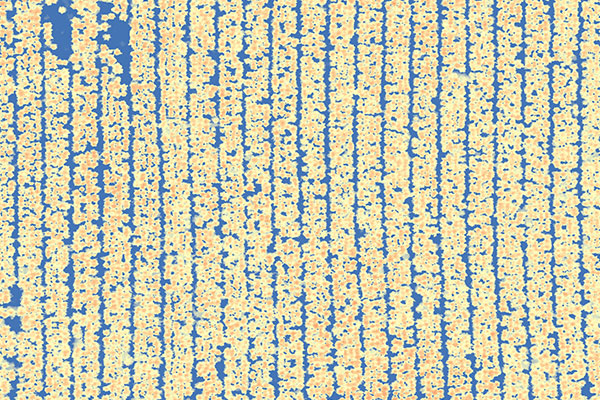2019 Images of Research Winners and Finalists
The University of South Australia’s Images of Research photography and videography competition, celebrates our research, highlighting its breadth and diversity, as well as the people who make it happen. We would like to thank everyone who submitted an image into the 2019 competition and congratulate the winners and finalists.
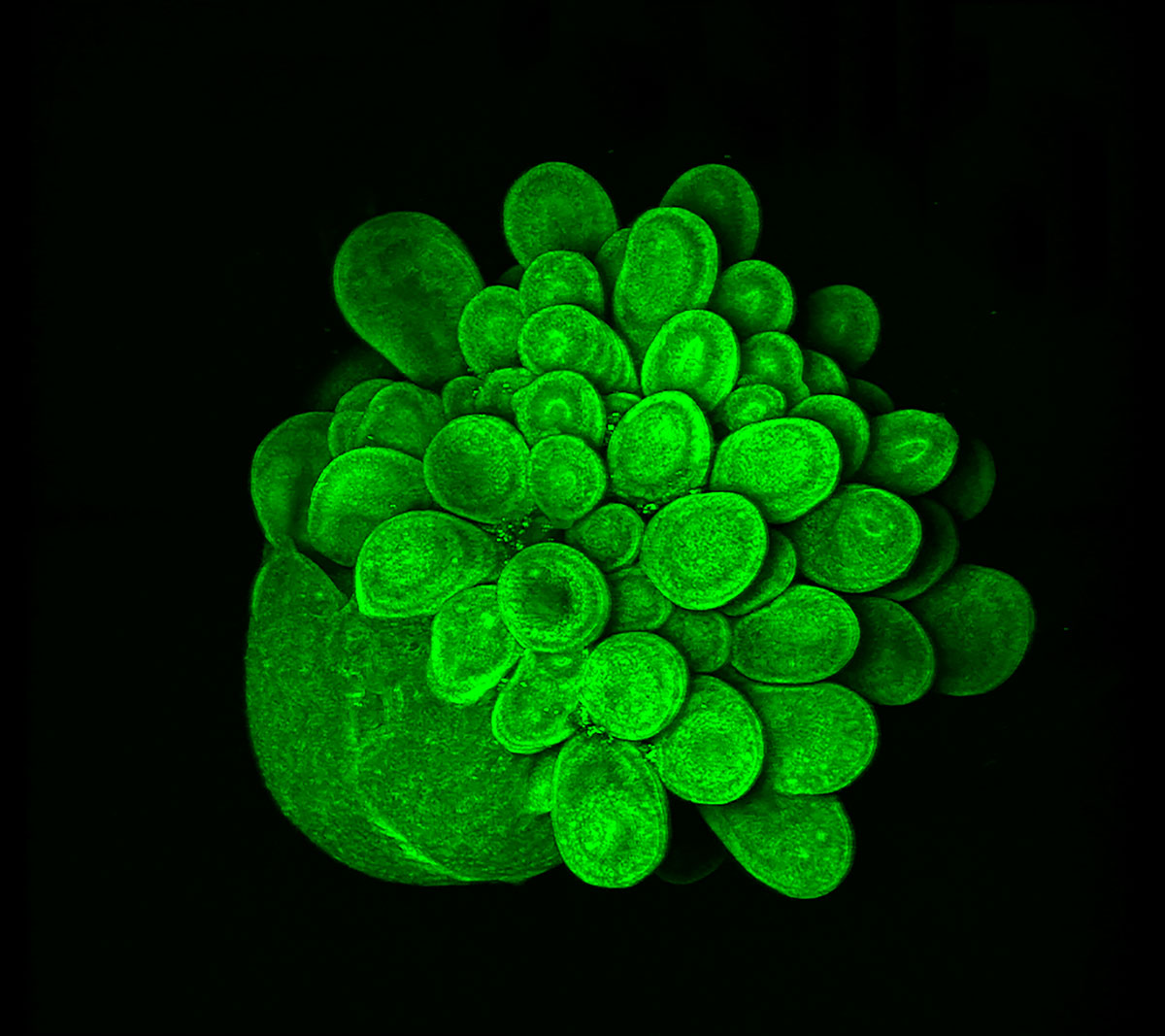
A Blooming Mini Brain
Mariana Oksdath Mansilla
Centre for Cancer Biology
This is an image of a 28 day-old human brain organoid, growing from iPSC that expressed Actin GFP. This 3D culture has a self-organisation of stem cells that mimics the fetal development of the human brain. To culture this organoid, we used a high-content scaffold that we developed in the lab using a 3D printer. The capability to print our high-content device, allows us to test efficiently several scaffold conditions for the growth of human brain organoids. The design of this human brain organoid array that generates healthy cultures (as we can see in the picture), is relevant in the search of a high-throughput platform for the screening of personalised treatment for brain cancer patients.
Finalists
Stabilizing Loose Sand for a Sustainable Future
Isaac Ahenkorah
School of Natural and Built Environments
Illuminated: Kent Town Urban Interventions (Video)
Katica Pedisic
School of Art, Architecture and Design
Visualising Complex Software
Rebecca Morgan
School of Information Technology and Mathematical Sciences
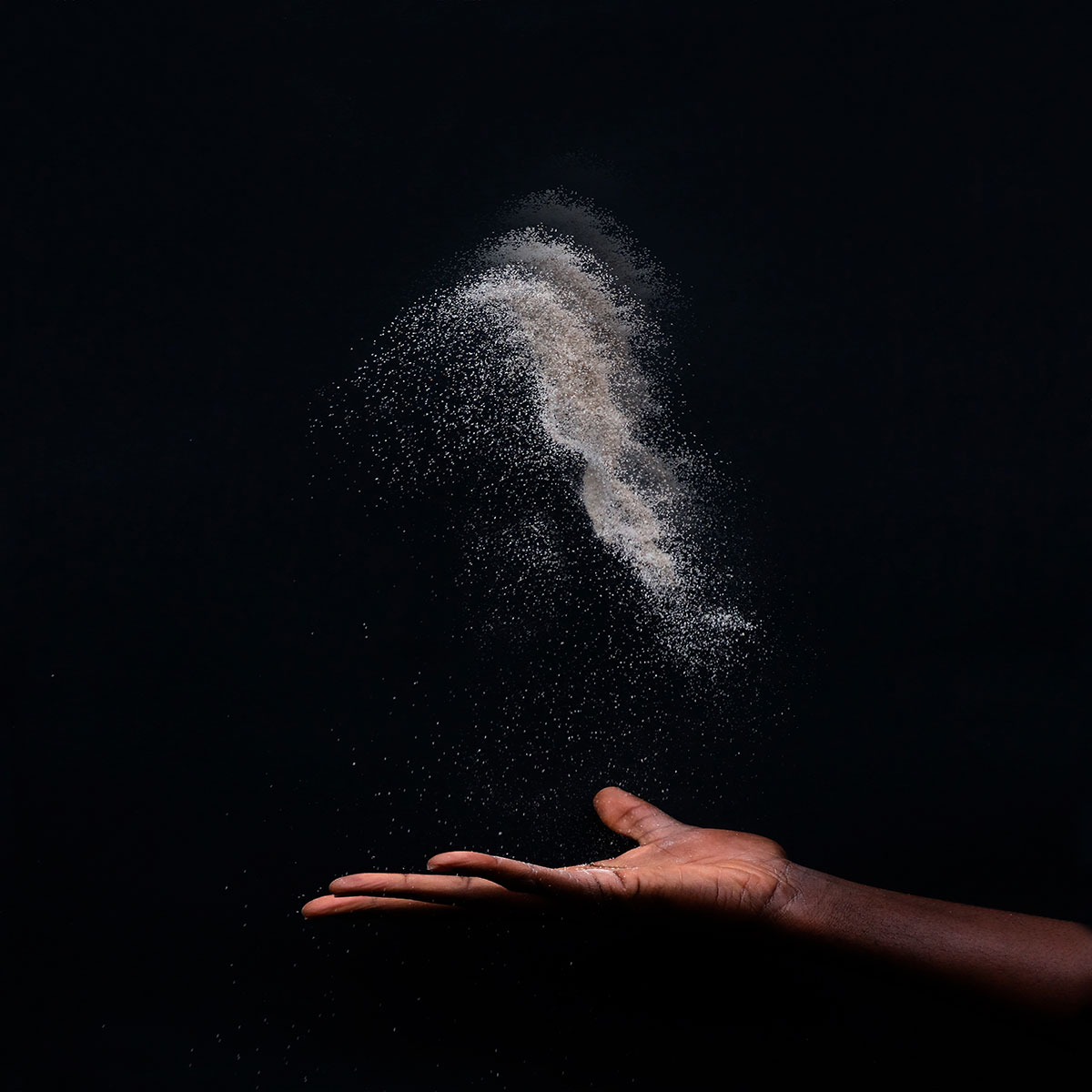
Stabilizing Loose Sand for a Sustainable Future
Isaac Ahenkorah
School of Natural and Built Environments
This image demonstrates the nature of soil, particularly sand in its loose state. The idea of this image is to demonstrate the ethos of geotechnical engineering in relation to stabilizing loose sand for a sustainable future.
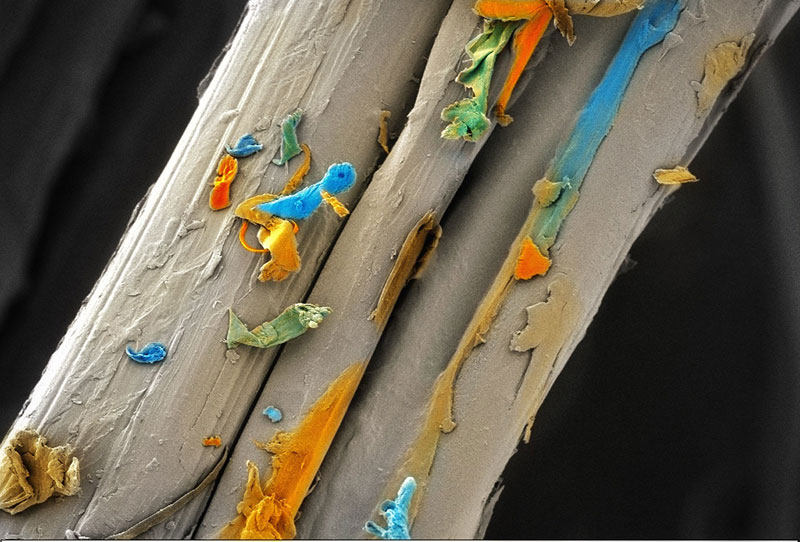
Fibre Based Microfluidics
Azadeh Nilghaz
Future Industries Institute
At first glance, you might see a mini dinosaur looking for food however it a single cotton fibre with the natural wax impurities on the fibre wall. These impurities can be removed by plasma cleaning or mercerization to make the fibre hydrophilic. The hydrophilic fibre is then ready to act as a hydrophilic channel which has lots of applications in the field of textile-based microfluidics.
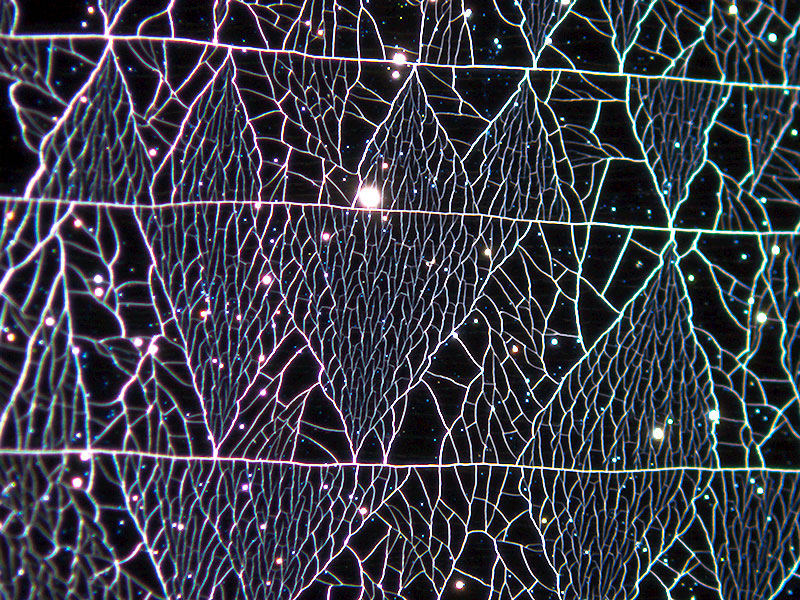
The Cracked Surface
Bastian Stoehr
Future Industries Institute
These lines are cracks in a 40 nanometer-thin layer of chrome and were deliberately caused by prestressing the substrate before the deposition process.
This sample was produced in an experiment aiming to achieve microscopic cracks within the coating. By chance, the cracks formed intricate lines, resembling a river delta.
The resulting decorative and functional coating aids the integration of radar sensors into future autonomous cars. Since the coating is not conductive on a macroscopic scale, radar radiation can pass through it and hence it can act as
a decorative member and a radome at the same time.
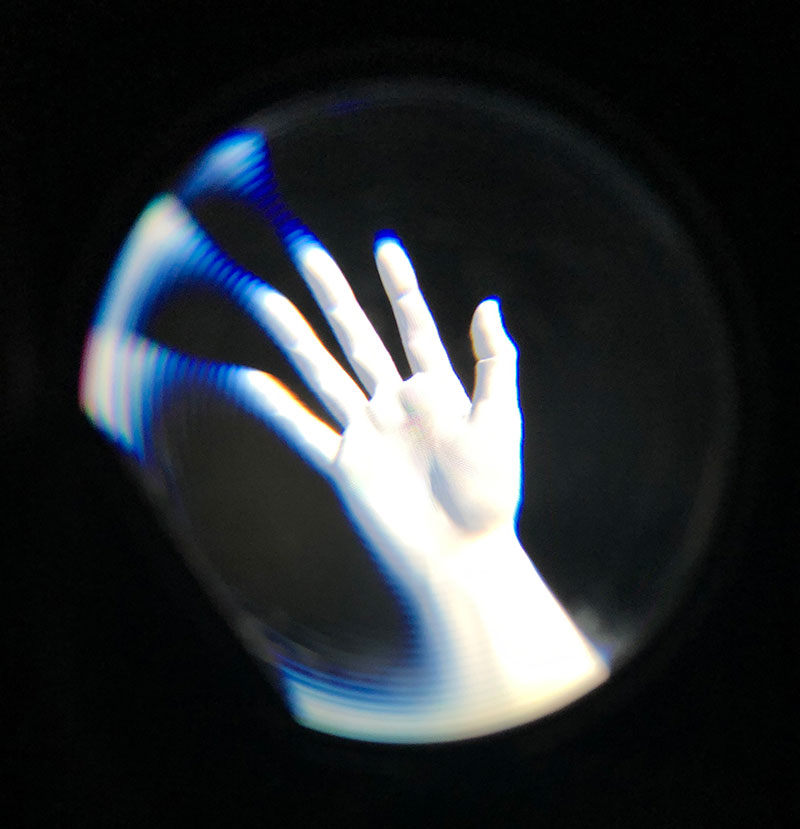
Virtual Perception
Brandon Matthews
School of Information Technology and Mathematical Sciences
Humans tend to believe what they see even when it doesn't align with their other senses. Through the lenses of Virtual Reality, we can control your perception of the world, even the position of your own hand.
Building Brain Pathways (Video)
Bonus Prize Winner
Brenton Hordacre
School of Health Sciences
This series of images comes from our current stroke study looking at a treatment to enhance recovery of arm function. We use magnetic resonance imaging (MRI) scans to tell us several pieces of information about the brain and how it has been affected by stroke. This particular set of images tells us about the brain’s pathways (the coloured lines). Each of the lines in this image represent an individual brain pathway. We are primarily interested in a bundle of pathways called the corticospinal tract which is the vertical blue/purple lines seen in the video that connect to the spinal cord. This pathway carries commands that control movement of our arms. Having a functional corticospinal tract is an important factor in recovery from stroke.
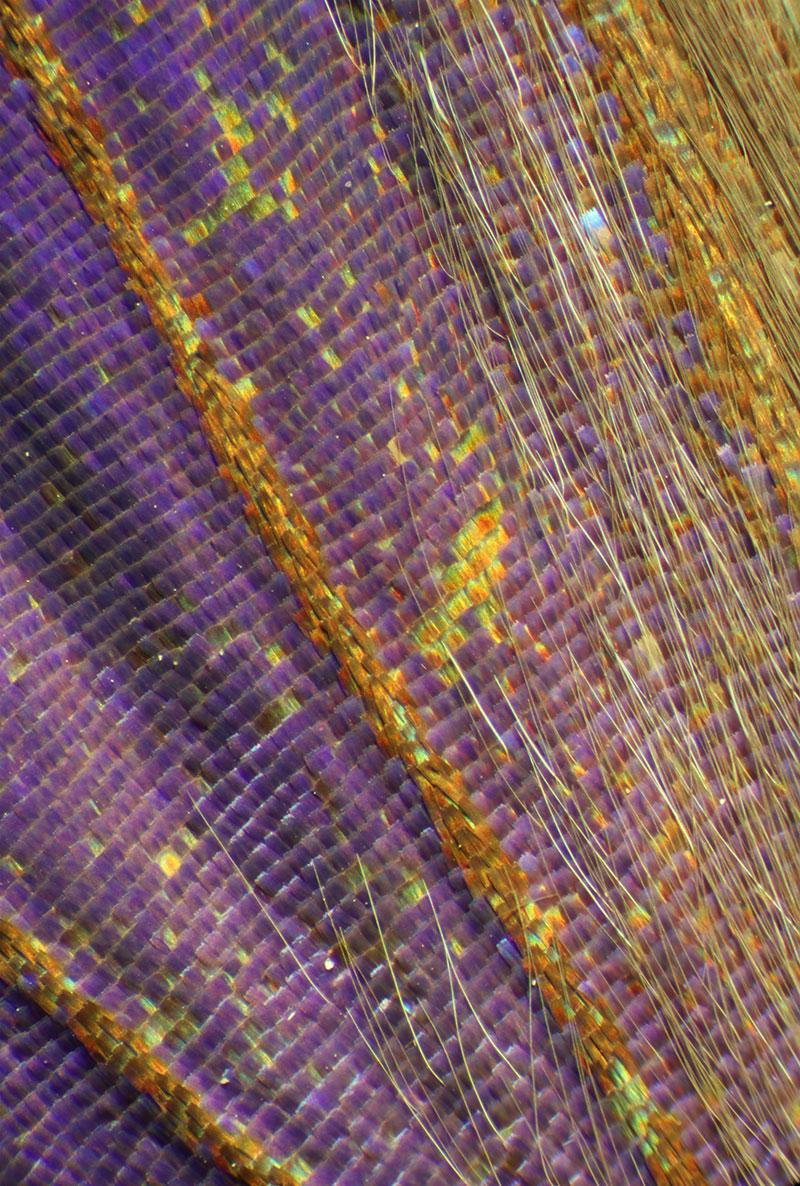
Whose Scales are These?
Eli Moore
Centre for Cancer Biology
This photograph of a butterfly wing highlights the limitations of the human eye. What we see and take for granted may reveal itself to be something completely different when observed more closely. In researching nanotechnology it is important to understand objects way beyond what the naked eye can see. The colours seen in this image are created by nano-size ridges on each scale. Nature is full of helpful design elements that can assist in producing better materials in the future.
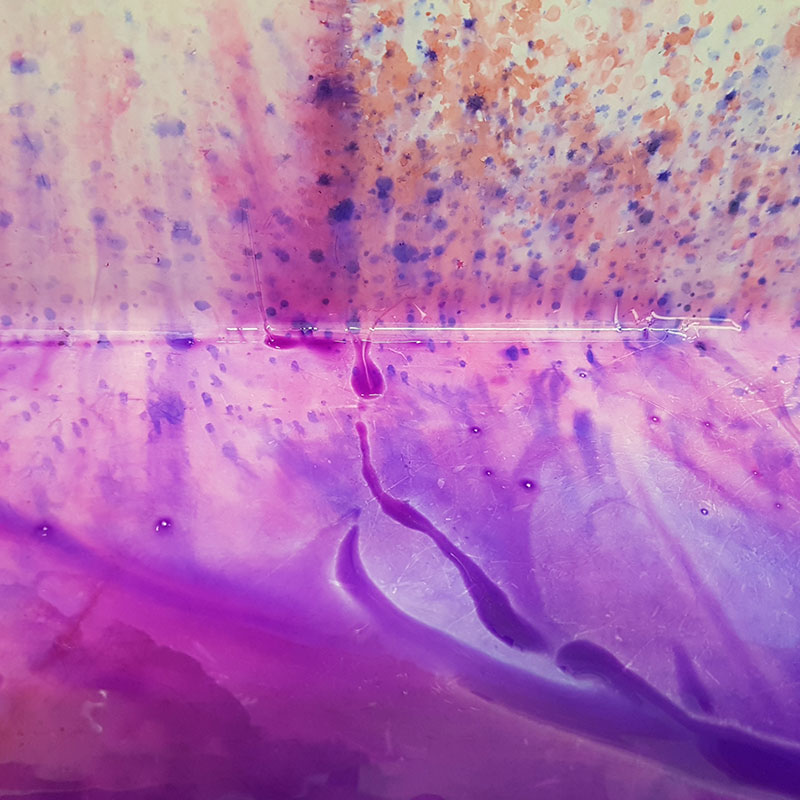
Waters of Pathology
Gink Yang
Future Industries Institute
Pathological assessment of biological samples often requires the use of Haematoxylin and Eosin (H&E) staining. My own research, nonetheless requires this simple procedure to assess the severity and progression of tumours and wounds. This simple yet crucial experimental process is often overshadowed by other complicated procedures. Here, the elegant and velvety watercolours of H&E is captured as the experimental procedures are being carried out. The image itself represents the unsung heroes in our scientific world
as well as in our society.
Illuminated: Kent Town Urban Interventions
Katica Pedisic
School of Art, Architecture and Design
This videographic excerpt is taken from a film demonstrating practice-based research in real-world and inventive studio explorations, by final year Masters of Architecture students. It shows students producing and operating large scale models of the inner suburb of Kent Town, as an urban laboratory for the Healthy Cities agenda. Funded by the Design Research for Health and Wellbeing Centre, and produced in collaboration with UniSA alumni film-maker, Nick Frayne, and AAD studio coordinators, the film is the culmination of a year-long study of this rapidly developing area. Addressing contemporary issues of density, diversity and social sustainability, students devised projects from authentic industry briefs, including an LGBTQI centre; medium-density ‘Missing Middle’ housing schemes; a regional market; headquarters for ethical producer Aesop and Uniting Communities ageing-in-place mixed-use complex. The students produced three operative models, allowing them to individually and collectively show over 90 different proposals.
Underpinning this research studio is a sustained enquiry into the value of narrative for deepening our understanding of architectural space and occupation. Exploring time-based mediums like film to communicate this process demonstrates the value of storytelling as a tool of educational engagement, and enlightens the general public in the craft of making and representing our urban realms.
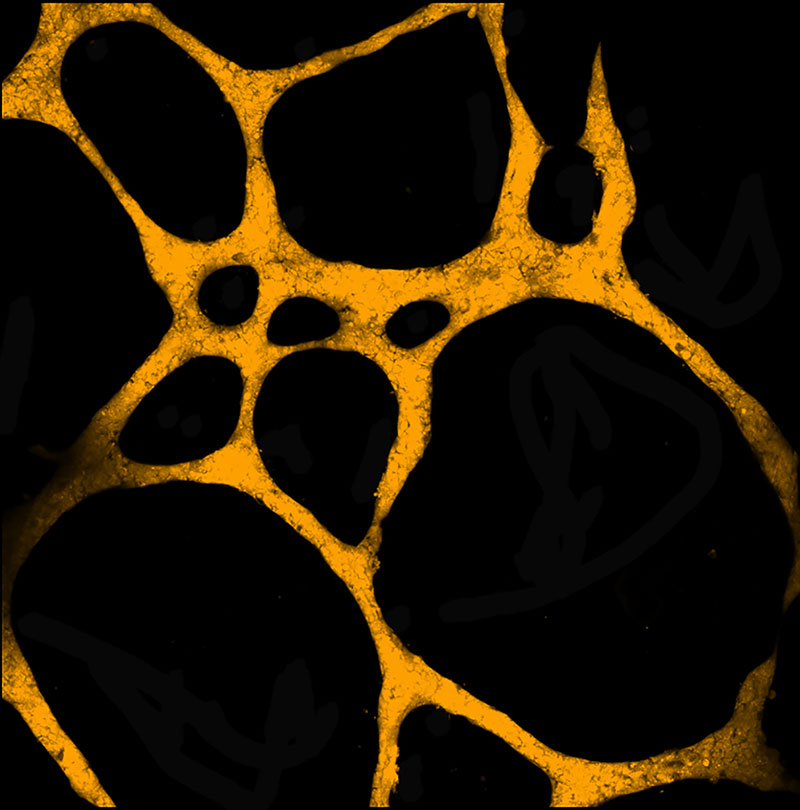
The Tumour Network
Kay Myo Min
School of Pharmacy and Medical Sciences
This image depicts the ability of cancer cells to form blood vessel-like structures so that they can gain access to the blood supply, a process known as "vasculogenic mimicry". This phenomenon is observed in highly aggressive forms of solid tumours and is correlated with poor patient survival outcomes.
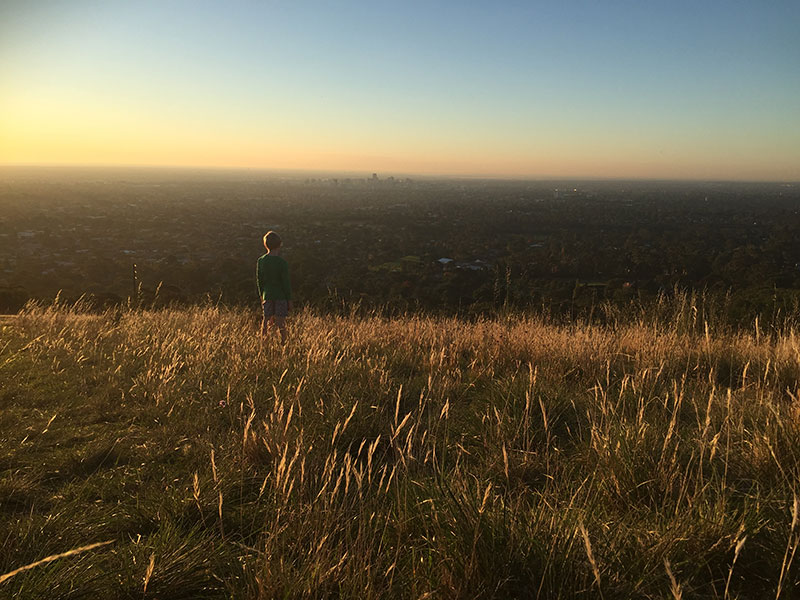
It Takes a Village
Kelly Ryan
School of Law
This is a photo of my son when he first came to live with us in out-of-home care. He is looking over Adelaide from the top of Lonely Hill. He and his sister are the inspiration for my research into child protection law. Fortunately for us, we are now their legal guardians.
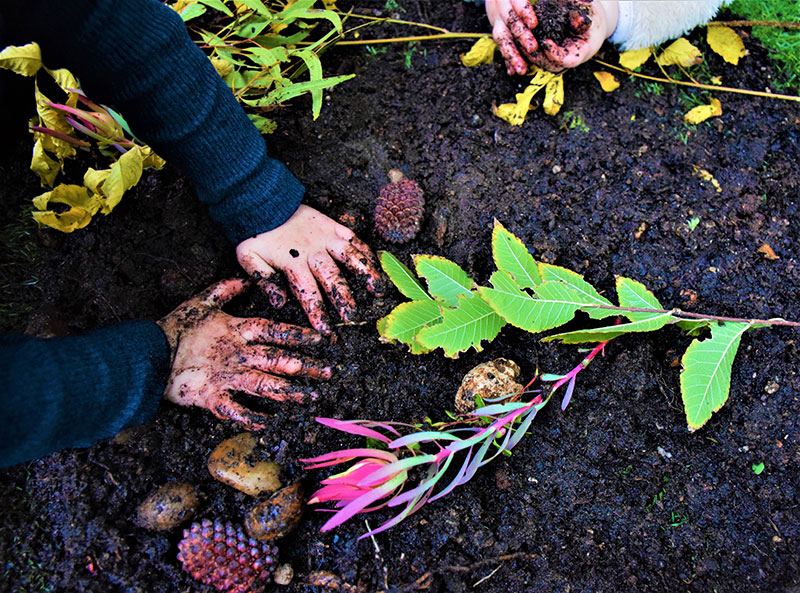
Dirty Hands Make for Creative Minds
Kylie Dankiw
School of Health Sciences
This image celebrates what childhood is all about and the simple pleasures that come from being a child – engaging with the natural world, building on curiosities and inquisitiveness, only bordered by the limits of one’s imagination. Yet, over time these opportunities in childhood have been lost, replaced by excessive screen time, glued to social media and excused due to concerns for safety and time. Instead, children should be encouraged to engage with nature. Nature play is about making mud pies, cubby houses from sticks, getting dirty, exploring a creek bed or climbing trees – or whatever a child chooses to do. Nature play is simply playing freely with, and in, nature. By unleashing children’s imagination, nature play stimulates children’s creativity through a diverse sensory experience, unique to the loose parts nature provides. Such as the smooth or rough touch of a rock, the sharp edge of a gumnut, the soft touch of a leaf and the aromatic smell of a flower. In addition to promoting activity, playing in nature can help children collaborate and interact with each other and negotiate and manage risks. The benefits of engaging with nature are aplenty and it is time we re-enable this to our children.
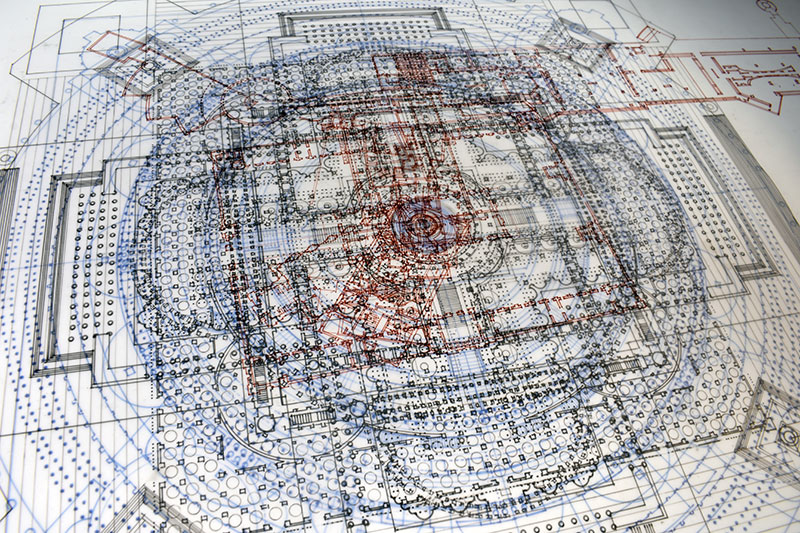
Megalomaniacal Plans: Conversations Across 236 Years
Rachel Hurst
School of Art, Architecture and Design
Megalomaniacal plans: conversations across 236 years, uses hand-traced superimposed archival drawings as an innovative form of architectural research. Combining material from the UniSA Architecture Museum and Bibliothèque nationale de France, it visually collides works of influential 18th century French architect, Étienne-Louis Boullée, with Australian projects of similar type or intent, constructed contemporaneously in the embryonic colony. The result is a dramatic manifestation of the disjunct between the canon and its colonial lineage.
Twelve plans are traced into three colour-coded drawings: blue and black for Boullée’s purist schemes; burnt sienna for the Australian projects and the fiction of Terra Nullius. The resulting labyrinthine mandala of lines exposes not only contrasts of scale, and the relationship between idealised and realised neo-classical projects, but an undiscovered error in a seminal drawing of architectural history. This mistake is later magnified into a small tapestry.
The bigger question is how processes idiosyncratic to architecture differ from scientific or humanities methodologies, as a specific form of enquiry and production. This practice-based research tests how, in a digital age, potentially obsolete forms of architectural representation might be used in new ways, and engages students with the Museum as a resource for creating powerful visual and spatial insights.
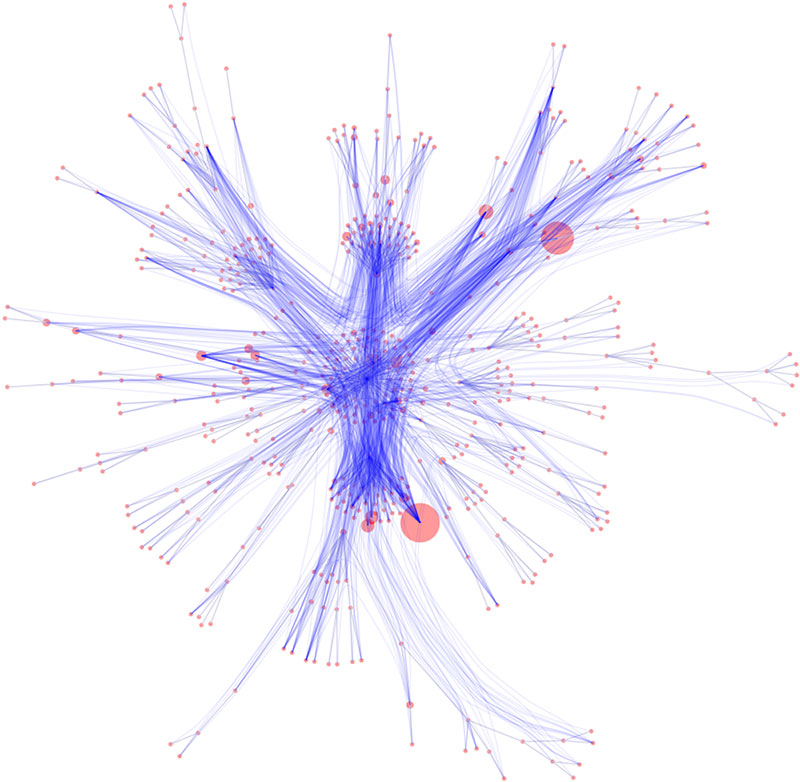
Visualising Complex Software
Rebecca Morgan
School of Information Technology and Mathematical Sciences
The image shows class structures, hierarchies and dependencies for our implementation and can be used to increase understanding of the complex structures underlying software architecture.
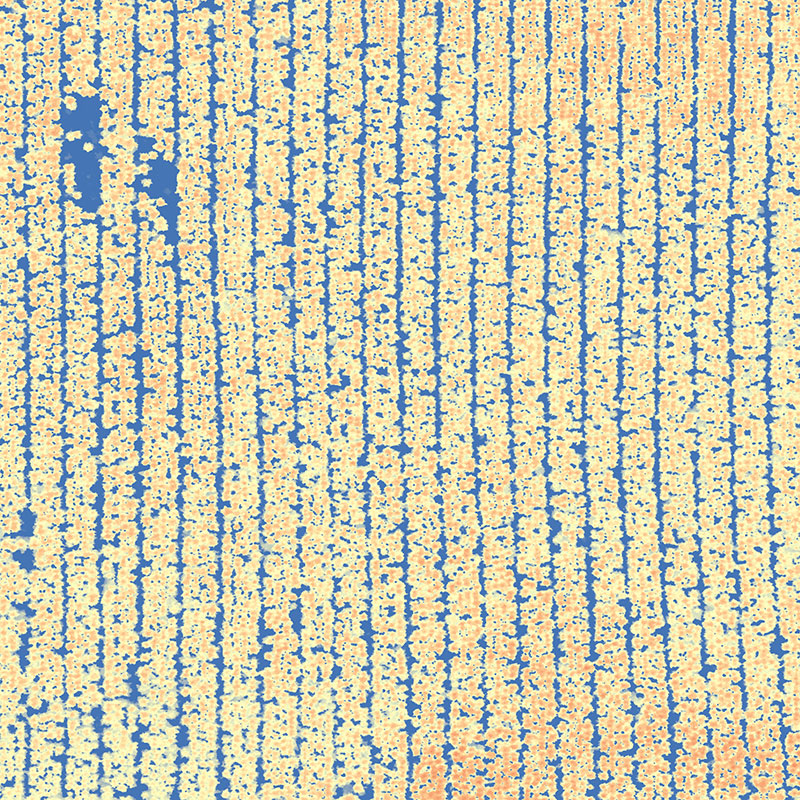
Pine Trees from Above
Stefan Peters
School of Natural and Built Environments
The image shows pine trees from above placed in a forestry plantation close to Mount Gambier, South Australia. Through an airborne LiDAR scanner a point cloud of the trees was captured and further processed into a normalised color-coded Canopy Height Model - blue represents the ground and red the maximum height of trees.


